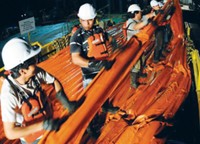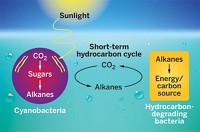Advertisement
Grab your lab coat. Let's get started
Welcome!
Welcome!
Create an account below to get 6 C&EN articles per month, receive newsletters and more - all free.
It seems this is your first time logging in online. Please enter the following information to continue.
As an ACS member you automatically get access to this site. All we need is few more details to create your reading experience.
Not you? Sign in with a different account.
Not you? Sign in with a different account.
ERROR 1
ERROR 1
ERROR 2
ERROR 2
ERROR 2
ERROR 2
ERROR 2
Password and Confirm password must match.
If you have an ACS member number, please enter it here so we can link this account to your membership. (optional)
ERROR 2
ACS values your privacy. By submitting your information, you are gaining access to C&EN and subscribing to our weekly newsletter. We use the information you provide to make your reading experience better, and we will never sell your data to third party members.
Biological Chemistry
Microbes Got A Boost From Oil-Leak Propane
Bacteria feeding off hydrocarbons in the Gulf of Mexico were initially stimulated by a natural-gas appetizer
by Elizabeth K. Wilson
September 20, 2010
| A version of this story appeared in
Volume 88, Issue 38

Bacteria feeding off heavy hydrocarbons leaking from the Deepwater Horizon oil rig in the Gulf of Mexico appear to have been initially stimulated by the availability of natural gas, a study reveals (Science, DOI: 10.1126/science.1196830). David L. Valentine of the University of California, Santa Barbara, and colleagues investigated microbes in four deep-ocean hydrocarbon gas plumes formed from the leak, both near the wellhead and up to 7 miles away. They found that most of the microbial activity was from respiration of ethane, propane, and butane gases. The group also analyzed DNA from the organisms. Those results show that bacterial communities near the wellhead, where the plume is fresher, contained lower levels of heavy-hydrocarbon-degrading microbes. Farther away, the heavy-hydrocarbon degraders dominated. Conditions have changed since the samples were collected in June, the researchers note, but the study provides scientists a handle on post-spill microbial dynamics and some predictive capability. For example, the researchers predict a series of boom-and-bust bacterial growth cycles in which simple hydrocarbon digesters initially dominate, followed by blooms of bacteria that eat complex hydrocarbons and methane.





Join the conversation
Contact the reporter
Submit a Letter to the Editor for publication
Engage with us on Twitter